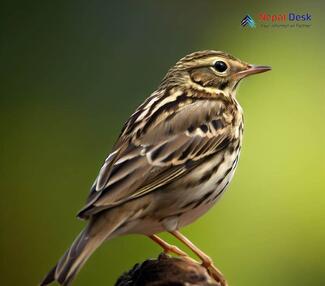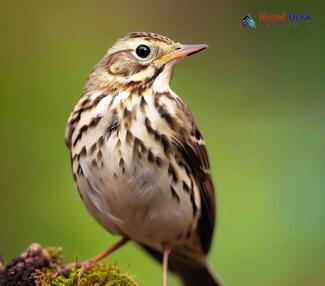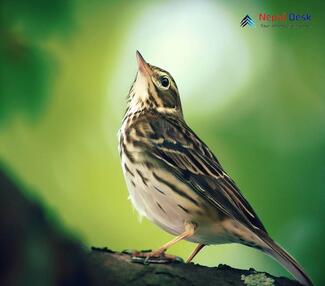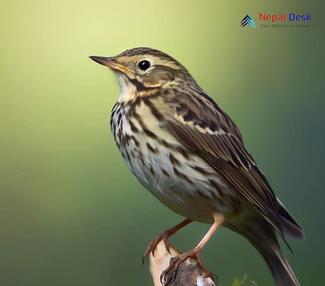The Tree Pipit (Anthus trivialis) is a fascinating bird species that many nature lovers and birdwatchers are eager to learn about. These small, enchanting creatures can be found in various regions, including Nepal, where they grace the environment with their presence. This article will provide an informative overview of the Tree Pipit, its distinguishing features, habits, and its occurrence in Nepal.
Physical Attributes and Identification
The Tree Pipit is a small passerine bird, measuring around 14-16 cm in length and displaying a predominantly brownish coloration on its upper parts. The underparts are characterized by whitish tones with dark streaks on the breast and flanks. Their distinctive traits include a thin bill, two pale wing bars, and white outer tail feathers visible during flight. These features aid birdwatchers in differentiating the Tree Pipit from similar-looking species like the Meadow Pipit.
Habitat and Distribution
Tree Pipits thrive in various habitats such as woodlands, forest edges, and open grasslands with scattered trees. They prefer areas with mixed vegetation that provides ample perching opportunities and sources for nesting material. The species has a broad geographical range, spanning from Western Europe to Asia. In Nepal, these delightful birds can be spotted mainly in middle-altitude forests and are known to have both resident and migratory populations.
Breeding and Migration Patterns
The breeding season of Tree Pipits typically starts in late April and continues until July. They create well-concealed nests on the ground or low in bushes utilizing grass, leaves, twigs, and moss. A female Tree Pipit lays up to six eggs per clutch, which hatch after approximately two weeks of incubation. Both parents invest effort into raising their young; however, the female assumes primary responsibility for brooding duties.
The migratory populations of Tree Pipits primarily breed across Europe and Asia and then migrate to Africa during the winter months. Their incredible flights can span thousands of kilometers, showcasing the impressive endurance of these small birds.
Diet and Feeding Habits
The primary diet of a Tree Pipit consists of insects, spiders, small invertebrates, and their larvae. They feed on a variety of prey species which helps them maintain a balanced diet and supports their energetic lifestyle. During the breeding season, Tree Pipits favor high-energy invertebrates to ensure adequate provision for their young. They carry out characteristic "flutter jumps" while maneuvering across bushes and open lands in search of food.
Preservation Efforts in Nepal
In Nepal, as well as other countries within the range of the Tree Pipit, efforts are being made to conserve not only this captivating species but also the diverse ecosystems they inhabit. National parks, wildlife reserves, community forests, and other conservation areas provide essential safe havens for numerous bird species. By preserving these vital habitats, we can help protect the unique ecosystems that support the continued presence of species like the Tree Pipit in Nepal.
In conclusion, the Tree Pipit is an intriguing bird species whose enchanting presence adds to the spectacular biodiversity found within Nepal. Understanding these enchanting creatures' habits, habitat preferences, and conservation needs can inspire appreciation for their ecological role and help guide preservation efforts for future generations to enjoy.




